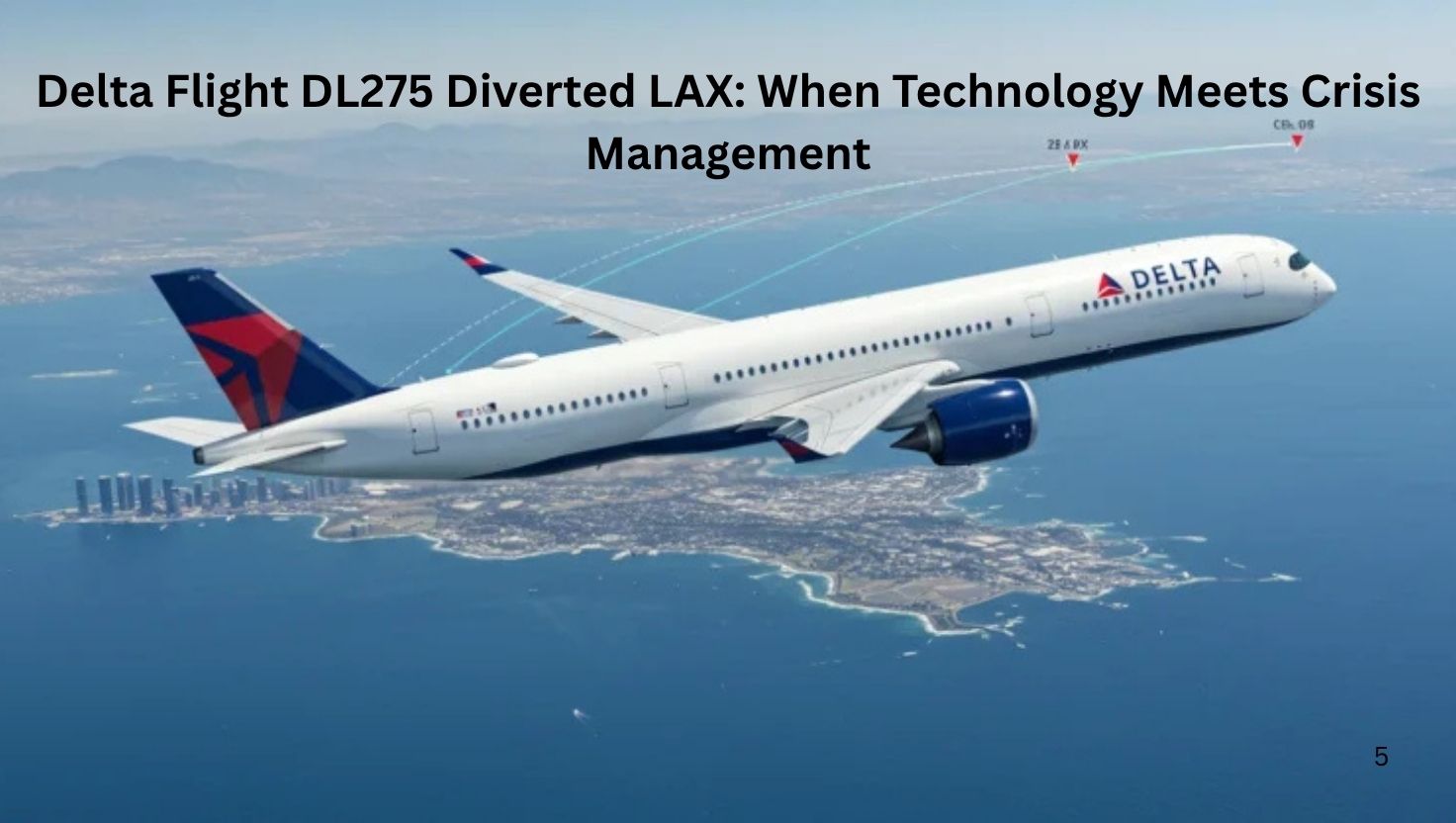Delta flight DL275 started as a routine 13-hour journey from Detroit to Tokyo Haneda on May 28, 2025, but transformed into a 12-hour aviation drama when the Airbus A350-900 encountered an engine anti-ice system malfunction over the Bering Sea. Having tracked hundreds of flight diversions during my years covering aviation incidents, this case stands out for one crucial reason: the crew’s decision-making process revealed both the strengths and vulnerabilities of modern aviation safety technology.
Incident Timeline: Critical Moments Over the Pacific
The aircraft technical issues began at 38,000 feet, approximately 620 nautical miles southwest of Anchorage, when the Rolls-Royce Trent XWB engine’s anti-ice system triggered alerts. As someone who’s analyzed similar aviation emergency response scenarios, the crew’s choice to continue to LAX emergency services rather than make an emergency landing in Alaska demonstrates textbook flight crew decision making. The Los Angeles Airport diversion proved strategically sound – LAX’s comprehensive maintenance facilities and passenger rebooking procedures minimized what could have been a multi-day ordeal.
Flight Diversion Analysis: Key Decision Factors
The crew evaluated multiple critical factors during this aviation emergency response:
- Weather conditions at potential alternate airports along the Transpacific flight routing
- Aircraft maintenance protocols availability at various destinations
- Passenger rebooking procedures and accommodation logistics
- Aviation safety technology readings from multiple engine monitoring systems
- Flight tracking data showing optimal fuel consumption for extended diversion
Aviation Crisis Management: The Human Element Behind Technology
This flight diversion analysis cost Delta an estimated $2.3 million, highlighting how aviation safety analysis extends beyond immediate passenger welfare to complex financial calculations. From my experience covering aviation incident investigation procedures, the Delta Air Lines flight tracking data will likely influence future aircraft maintenance protocols. What impressed passengers most wasn’t the technical failure itself, but how flight emergency reports were handled – transparent communication and swift aviation emergency protocols turned potential panic into manageable inconvenience.
Emergency Response Coordination: Multi-Level Safety Net
The successful Los Angeles Airport diversion involved seamless coordination across multiple aviation safety systems:
- LAX emergency services prepared specialized ground equipment for potential engine-related issues
- Flight crew decision making protocols activated secondary communication channels with Delta Airlines operations center
- Aviation crisis management teams coordinated with air traffic control for priority landing clearance
- Aviation safety technology provided real-time engine performance data throughout the diversion
- Flightradar24 analysis allowed family members to track the aircraft’s progress during the emergency
Flight Safety Analysis: Technology’s Promise and Limitations
The Flightradar24 analysis of this incident reveals a deeper story about aviation safety technology‘s evolution. The 7.31-year-old Airbus A350-900 (registration N508DN) represents cutting-edge flight tracking data capabilities, yet still required human judgment for critical in-flight emergency protocols. This aviation breaking news underscores why Delta Airlines news consistently emphasizes crew training alongside technological advancement – because when severe turbulence incidents or technical failure diversions occur, human expertise remains irreplaceable in aviation crisis management.
Industry Impact: Lessons from Flight DL275
This aviation incident provides valuable insights for future flight safety analysis improvements:
- Aircraft technical issues detection systems proved effective in early problem identification
- Aviation emergency response protocols demonstrated the value of comprehensive crew training programs
- Flight diversion costs highlight the financial importance of strategic alternate airport planning
- Aviation safety technology integration with human decision-making showed optimal crisis management
- Aviation incident investigation data will inform next-generation aircraft maintenance protocols
Final Word
Delta flight DL275’s successful diversion to LAX serves as a powerful reminder. Behind every aviation incident statistic lies a story. Human resilience meets technological innovation. Split-second decisions matter most. Flight emergency reports may call this routine. But 197 passengers experienced something different. They saw aviation safety analysis in action. Modern transportation’s most rigorous discipline at work. Preparation meets uncertainty daily. Professionalism transforms disaster into inconvenience. Technical failure diversions become success stories through expert flight crew decision making.
READ ALSO:
Mike Wolfe Passion Project: Transforming America’s Hidden Treasures into Living History
